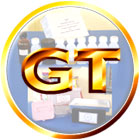 |
Pesticides, better known as insecticides,
are poisonous substances used to prevent and terminate pests of agricultural
products like vegetables, fruits, grains for example.
|
However the amount of toxic
in these foods must be at a safe level, which brings us to the fact
that testing for the toxicity of these foods can be very complicated.
Expensive equipments are required, the tester has to be very skillful
and experienced, accompanied by the fact that the test takes a long
time to complete, which turns out to be too slow considering the
fast deterioration rate of agricultural products. The safety level
must also be compared to international standards as well. However,
comparison often brings complications since the chemicals found in
certain samples dont have a specified value, therefore it is difficult
to determine if the toxin found in the food is safe or not.
Therefore the invention and development of semi-standard solvent
test kit is useful in filtering out unsafe samples. The safety levels
are made from the toxicity of one toxin or the combined toxicity
that hampers the performance of the Enzyme-chlorine-esterase by at
least 50%. This safety level is then compared and analyzed with results
from standard lab results. We found that the result is satisfactory
and the results were very reasonable. For that reason this test kit
is suitable for filtering out unsafe food for the consumers in time
for their needs. This test kit will only take 60 minutes to run,
and is quite accurate; ideal for testing and controlling the cleanliness
of fresh fruits and vegetables before selling. It can also be used
for research that involves testing many samples in a series or to
expand the investigation of toxicity in soil and water. For users
who need speed, we have developed the test kit and reduced the testing
time from 60 minutes to 15 minutes and 30 minutes respectively, this
gives the customers a variety of choice.
Many theorists have questioned the testing method of fruits and
vegetables using cholinesterase inhibition technique. This technique
can only test 2 groups of toxins: Phosphates and Carbamates. Other
groups like Chlorinepyritroid, fungicide for example. Therefore it
doesnt mean that if the tester tested negative, there wont be any
toxins in the vegetables. Since, as I have to admit There is yet
to be any testing method that is capable of detecting every single
kind of toxin in vegetables, even testing methods made in the lab
using expensive equipments still needs the test to be divided into
groups, each group based on the ability of the tester, which varies
greatly. Therefore is the standard tested negative, it doesnt mean
that there arent any toxins in the sample, especially since the
result of the test greatly depends on the ability of the tester and
the chemical used to test. In the case that the toxin in the sample
changes or decomposes after reacting with the plant tissue and forms
a new chemical that is even more toxic, this cannot be detected using
the standard testing method. However the Cholinesterase inhabitation
technique uses enzyme to determine toxicity, so the enzyme is able
to easily and clearly detect the toxicity.
In the other case that chemicals extracted from the nature is used to neutralize
insecticides is used on Micro-agricultural products, a frequent dose of it
can lead to accumulation and toxicity. This often happens when users think
the product is natural and overuses it. In conclusion, this skim-test is
extremely useful in filtering out unsafe products and is inexpensive and takes
up only a short period of time such that the food wont decay. This is one
of the best methods around until new methods are invented.
Qualification
|
Standard testing
pppppppppppppppppp
|
GT-test kit testing
|
Investment
|
High
|
Low
|
Time
|
sending experiment(30 days)
|
Depending on GT-1
(30,60 mins)
|
Quantity use of chemical
|
High
|
Low
|
Tester experience
|
Required
|
Not required
|
Waste
|
Have a large quantity and need to be eliminated by technicain
|
Have a small quantity
and can be eliminated
by non technician
|
Reading Result
|
1. Difficult to read the result as detected toxic is depending
on ability of tester and standand chemical to compare sorely.
Therefore, in case of non experience tester and no chemical
comparison would be unable to detect the poisonous.
|
1. Easy to read the
result by comparing
the color of control
and critical tubes
(Detail in " Introduction
to basic testing")Since,
tester can sightly
compare.
|
2. When the toxic is conterminated with other(s), it changed
after used/dissolved or reactioned with cell plant; the new
toxic, which has more toxicity, cannot be tested.
|
2. The result cannot
be addressed whether
it is in which
type or
group; however, the
color itself can notified
the toxic that has been
detected is in the safe
level or not.
|
3. When the poisonous has been addressed which type or group
it is if there is no MRL index within Thai and others, tester
will not be able to specify that it is safe to be consumed
or not.
|
3. In case of contamination/dissolve/
reaction with cell
plant,
the enzyme in GT-test
kitwill show the
toxicity obviously.
|
|